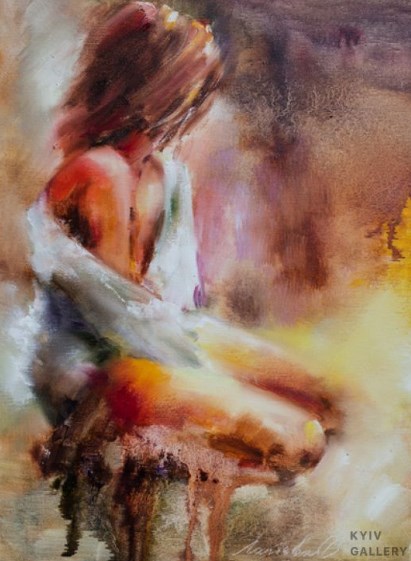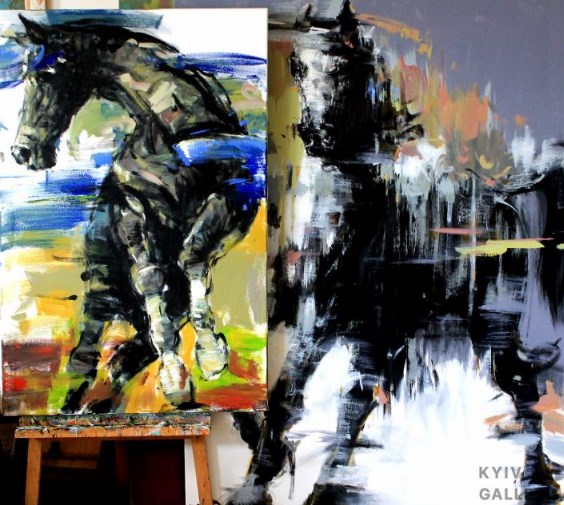Modernist art was not the result of purposeful activities of a group of artists. In this direction distinguish tens currents, developed in different countries and in different decades of the second half of XIX - early XX centuries. They all share common aspirations, ideals and attitudes towards academic art.
The birth of a new era
In art is considered to be, that modernism was born in 1863 year, when the famous painter Edouard Manet exhibited at the Salon des Refuses scandalous painting «Le déjeuner sur l'herbe». The picture did not accept the official Paris Salon exhibition because of its plot: on it with dressed man, Eat breakfast in nature, It was depicted bare woman. This event marked the break of a new generation of artists with the academic tradition. Since then it began the development of a new direction, called Modernism or "other art", look at the picture https://kyiv.gallery/ru/kartiny/modernizm.

of course, revolution took place not in one day. As known, the debate on contemporary art in Western Europe began in the Renaissance. With renewed vigor they renewed, and in the XVII and XVIII centuries,, but each time ended with the creation of new styles without a radical updating of all artistic tradition. The emergence of a new direction and was preceded by the concept of "art for art's sake" and trends in the visual arts to the formalism, aestheticism, subjectivism.
Contemporaries differently evaluated the event in Salon des Refuses: some considered it an omen of long-awaited changes, while others - only the beginning of renovation of individual movements. Time is found, that modernism - is an independent direction, radically affected the visual arts in Europe and around the world.
The essence of modernism and its main course
With the advent of modernism in painting there are conceptual change. Artist instead begins to express what he saw on the canvases of his attitude to reality. Most representatives of this trend there is a desire to show the viewer a subjective truth, not transmitted by simple copying of external objects. All this was accompanied by a radical revision of traditional forms and methods of expression, taken in the classical fine arts.
The results of the first experiments quickly bore fruit: born such areas, cubism, Post-Impressionism and Dadaism.
Cubism. Artists Cubists experimented with dimensions of space. On paintings in the style of cubism They laid out the complex three-dimensional objects into simple elements, and then re-assembled them, but in two-dimensional space. The goal of this art was the approval of a new look at familiar things from an unusual angle. Artists sought to be separated with simple forms part of complex objects. Among the most famous works of this trend can be called "Les Demoiselles d'Avignon" by Picasso and "The man in the cafe" Juan Gris.
In total, there are dozens of modernism trends, among which a special influence on his contemporaries were: Fauvism, futurism, avant-garde, primitivism, symbolism and futurism.
Fauvism. On Fauvism paintings often you can see the exaltation of colors and expressive colors wild. The work of artists was aimed at provocation in the minds of the audience sensations of energy and passion. Contrast par with the rejection of linear perspective attached to the work Fauves with nothing comparable to the identity.
Futurism. In Fauvism, he borrowed the ability to say the color, and cubism has artistic forms. On the canvases of the Fauves, one can see energetic compositions with sharp corners and fragmented fragments. Zigzags, spirals, beveled cones and other shapes were used to emotionally express the dynamism of the phenomena of our world.
Vanguard. It is often associated with other schools of modernism of the early 20th century.. In the narrow sense of the word - is for, whose members work in the field of experimental art. The word "avant-garde" itself denotes the innovative nature of creative activity.
Primitivism. On paintings by primitivist artists you can see simplified forms, reminding children drawings or petroglyphs primitive tribes. In search of new methods of expression representatives of the current applied to the medieval engravings and popular prints.
Symbolism. He is one of the most popular trends of fine arts of the XX century. Its members use vivid images (symbols) referring us to the deep layers of the subconscious cultural. Symbolist paintings full of innuendo, allusions and mystery.
Modernism in Ukrainian painting

Among the representatives of cubism deserve special attention in the. Baranov-Rossini and K. Malevich. Last, studying at the Moscow studio F. Rerberga, I experimented with modernity, Post-Impressionism and Fauvism until he came to the analytical cubism.
It is worth noting, that in the Ukrainian cultural environment, some styles of modernism were assimilated "from the outside" without prior preparation, therefore he absorbed the domestic cultural experience. Therefore, eg, there was "naive art" M. Sinyakova, M. Boychuk, ABOUT. Shevchenko, M. Larionova and N. Goncharova. They deliberately used a simplified technique., outwardly reminiscent of the style of arts and crafts, to experiment with expressive forms, how primitivists did it. In the early 30s of the XX century, the development of modernist styles was interrupted: in the new socio-political conditions, artists no longer had the opportunity to engage in "bourgeois art".












